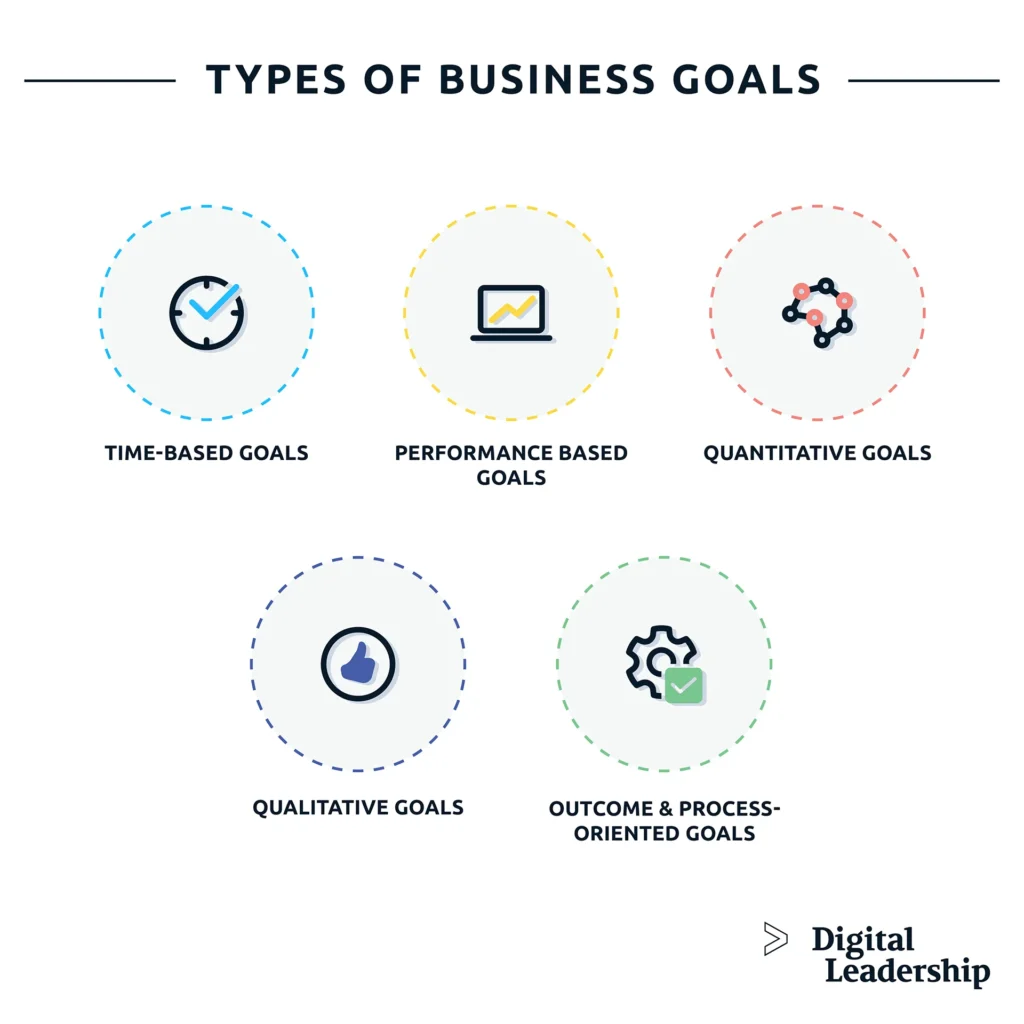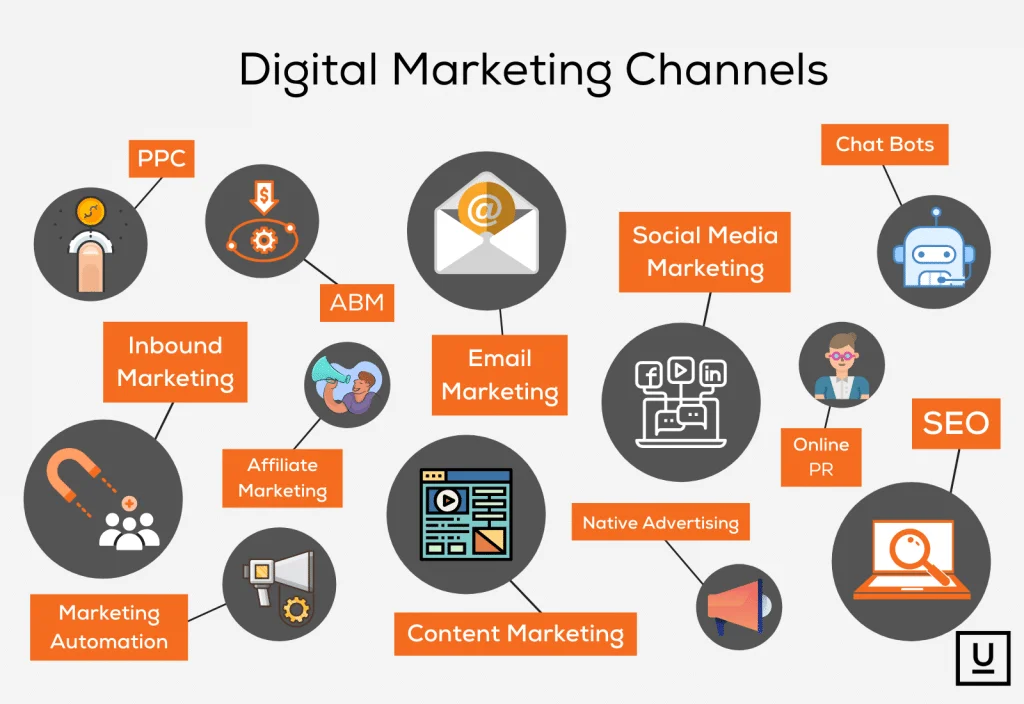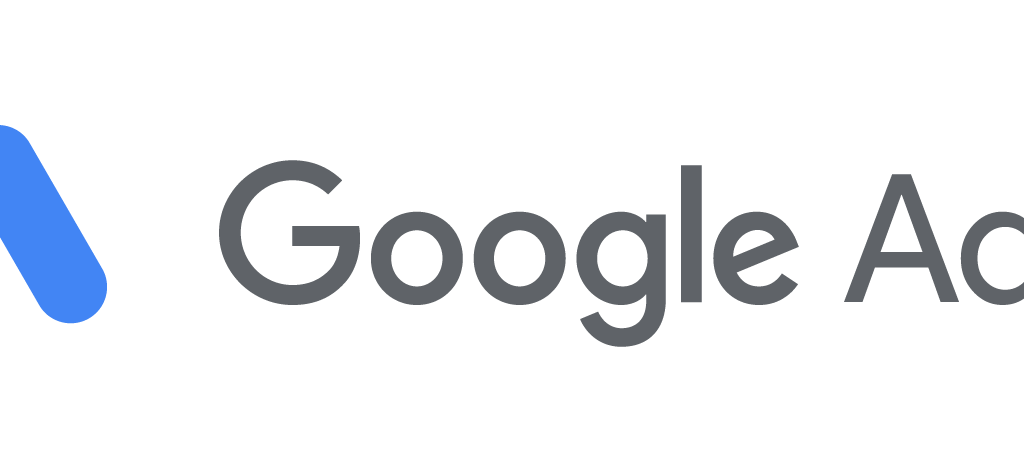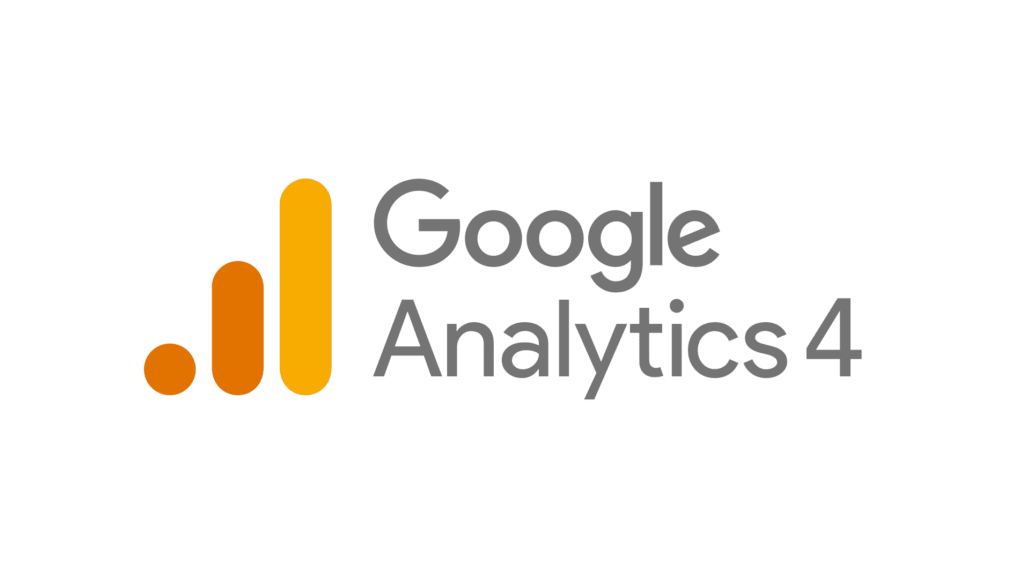How to Create a Digital Marketing Strategy from Scratch (Step-by-Step)
Creating a digital marketing strategy from scratch can feel overwhelming, but breaking it down into clear steps makes it manageable. This guide is for small business owners, marketing managers, and entrepreneurs who need a complete roadmap to build their online presence and drive real results.
You’ll learn how to define your business goals and identify your ideal customers through market research. We’ll also walk you through selecting the right digital marketing channels for your business and setting up proper tracking systems to measure your success.
By the end, you’ll have a actionable framework to launch your digital marketing efforts with confidence and optimize them for better performance over time.
Define Your Business Goals and Objectives

Identify specific revenue targets and growth metrics
Start by getting crystal clear on what success looks like for your business in hard numbers. Revenue targets aren’t just wishful thinking – they’re the north star that guides every marketing decision you’ll make. Whether you’re aiming for $50,000 in additional monthly revenue or targeting a 25% year-over-year growth rate, these numbers need to be realistic yet ambitious enough to push your team forward.
Break down your revenue goals into quarterly milestones. If your annual target is $500,000 in new revenue, that translates to roughly $125,000 per quarter or about $10,400 per month. This granular approach makes big goals feel manageable and helps you spot problems early when monthly numbers start falling short.
Consider metrics beyond pure revenue that indicate healthy growth: customer lifetime value, average order value, and monthly recurring revenue for subscription businesses. These supporting metrics often tell a richer story than revenue alone and help you understand which marketing efforts drive the most valuable customers.
Establish brand awareness and market positioning goals
Brand awareness goals require a different approach than direct revenue targets. You’re looking at metrics like brand recall, share of voice in your industry, and how often potential customers think of your company when they need your solution.
Set measurable brand awareness targets such as achieving a 15% increase in branded search terms over six months or capturing 10% of industry-related social media conversations. These goals should align with where you want to position your brand in the competitive landscape.
Market positioning goes hand-in-hand with awareness. Decide whether you want to be known as the budget-friendly option, the premium choice, or the innovative disruptor. Your positioning directly influences which marketing channels you’ll prioritize and how you’ll craft your messaging across all touchpoints.
Set customer acquisition and retention benchmarks
Customer acquisition cost (CAC) and customer lifetime value (CLV) form the backbone of sustainable growth. Calculate your current CAC across different channels – paid search might cost $150 per customer while email marketing costs $25. These baselines help you set realistic improvement targets.
Retention benchmarks deserve equal attention since keeping existing customers costs significantly less than finding new ones. Track metrics like churn rate, repeat purchase rate, and net promoter score. A 5% improvement in retention can boost profits by 25-95%, making these metrics incredibly valuable for long-term success.
Set specific targets for each stage of your customer journey. Maybe you want to improve your lead-to-customer conversion rate from 3% to 5%, or increase your email open rates from 22% to 28%. These micro-improvements compound over time to create substantial business impact.
Determine timeline and budget constraints
Your timeline shapes everything else in your strategy. A startup with six months of runway approaches digital marketing differently than an established company planning for the next fiscal year. Map out your critical business milestones – product launches, seasonal peaks, or funding rounds – and align your marketing timeline accordingly.
Budget allocation requires balancing immediate needs with long-term investments. Typically, businesses spend 7-12% of revenue on marketing, but your stage and industry might demand different approaches. Allocate roughly 60% of your budget to proven channels and 40% to testing new opportunities.
Consider your team’s capacity alongside financial constraints. Even with unlimited budget, you might lack the internal expertise to manage complex campaigns effectively. Factor in costs for tools, training, or external partnerships when setting realistic timelines for implementation and results.
Research Your Target Audience and Market

Create Detailed Buyer Personas with Demographics and Behaviors
Start by gathering data from your existing customers through surveys, interviews, and analytics tools. Look at age ranges, geographic locations, income levels, education, and job titles. But don’t stop there—dig deeper into their online behaviors, preferred social media platforms, shopping habits, and content consumption patterns.
Build 2-3 primary personas that represent your core audience segments. Give each persona a name, photo, and detailed background story. Include their daily challenges, goals, motivations, and preferred communication styles. For example, “Marketing Manager Maria” might be a 32-year-old professional who checks LinkedIn daily, prefers video content, and makes decisions based on ROI data.
Use tools like Google Analytics, Facebook Audience Insights, and customer surveys to validate your assumptions. Track which content types generate the most engagement and which channels drive the highest-quality leads for each persona.
Analyze Competitor Strategies and Market Positioning
Study your top 5-10 competitors’ digital presence across all channels. Examine their website design, content themes, posting frequency, and engagement rates. Use tools like SEMrush, Ahrefs, or SimilarWeb to uncover their top-performing keywords, traffic sources, and advertising strategies.
Create a competitive analysis spreadsheet tracking:
| Competitor | Content Focus | Posting Frequency | Top Channels | Unique Value Prop |
|---|---|---|---|---|
| Competitor A | Educational blogs | 3x/week | LinkedIn, Email | Industry expertise |
| Competitor B | Product demos | Daily | YouTube, Instagram | Visual tutorials |
Look for gaps in their strategies—topics they’re not covering, audiences they’re missing, or channels they’re underutilizing. These gaps represent opportunities for your brand to stand out.
Identify Customer Pain Points and Needs
Conduct direct customer research through interviews, focus groups, and feedback surveys. Ask open-ended questions about their biggest challenges, frustrations with current solutions, and what success looks like for them.
Monitor social media conversations, online forums, and review sites where your target audience discusses problems related to your industry. Use tools like BuzzSumo or Mention to track brand mentions and relevant keyword discussions.
Create a pain point priority matrix ranking issues by frequency and intensity. Common pain points often include time constraints, budget limitations, lack of expertise, or complex processes. Document both emotional pain points (stress, frustration) and practical ones (inefficient workflows, poor results).
Map the Customer Journey and Touchpoints
Break down your customer’s path from initial awareness to post-purchase advocacy into distinct stages. Typically, this includes awareness, consideration, decision, purchase, and retention phases.
For each stage, identify:
- What triggers move customers to the next phase
- Which channels they prefer at each stage
- What information they need to progress
- Potential obstacles or friction points
Create visual journey maps showing all touchpoints—your website, social media, email, customer service, and third-party review sites. Include both digital and offline interactions that influence their decision-making process.
Test your assumptions by tracking real customer behavior through analytics, heatmaps, and user session recordings. Look for drop-off points or unexpected navigation patterns that might reveal journey insights you missed during initial mapping.
Choose Your Digital Marketing Channels

Evaluate Social Media Platforms for Your Audience
Your audience doesn’t hang out on every social platform, so pick your battles wisely. Start by looking at where your target customers actually spend their time online. LinkedIn works great if you’re targeting professionals and B2B clients, while TikTok might be perfect for reaching Gen Z consumers.
Check out platform demographics and user behavior patterns. Facebook still dominates for reaching older millennials and Gen X, Instagram excels for visual brands targeting younger demographics, and Twitter remains strong for real-time conversations and thought leadership.
Consider your content type too. Video-heavy brands thrive on YouTube and TikTok, while image-focused businesses find success on Instagram and Pinterest. Don’t spread yourself too thin – it’s better to dominate 2-3 platforms than to post mediocre content everywhere.
Assess Search Engine Marketing Opportunities
Search engines are where purchase decisions begin. Research shows that 93% of online experiences start with a search engine, making SEO and paid search critical components of your strategy.
Start with keyword research to understand what your customers are actually searching for. Use tools like Google Keyword Planner, Ahrefs, or SEMrush to identify high-volume, relevant terms in your industry. Look for both informational queries (people learning about problems) and transactional queries (people ready to buy).
Analyze your competition’s search presence. What keywords are they ranking for? Which ones are they bidding on? This gives you insights into what’s working in your market and helps you identify gaps you can exploit.
Consider local SEO if you serve specific geographic areas. Google My Business optimization and local directory listings can drive significant foot traffic for brick-and-mortar businesses.
Determine Email Marketing Potential
Email remains one of the highest ROI marketing channels, averaging $42 returned for every dollar spent. The key is building a quality subscriber list and sending relevant, valuable content.
Think about your customer journey and where email fits. Welcome sequences work great for new subscribers, while abandoned cart emails can recover lost sales. Newsletter campaigns keep your brand top-of-mind, and promotional emails drive direct sales.
Segment your audience based on behavior, demographics, or purchase history. A yoga studio might send different content to beginners versus advanced practitioners. An e-commerce store could segment by past purchase categories.
Consider automation opportunities. Drip campaigns, birthday emails, re-engagement sequences, and post-purchase follow-ups can run on autopilot while delivering personalized experiences.
Consider Content Marketing and Blogging Options
Content marketing builds trust and positions your brand as an industry authority. Blog posts, videos, podcasts, and downloadable resources attract potential customers who aren’t ready to buy yet.
Map your content to different stages of the buyer’s journey. Top-of-funnel content answers basic questions and provides educational value. Middle-funnel content dives deeper into solutions and comparisons. Bottom-funnel content addresses specific objections and showcases your expertise.
Choose formats that match your strengths and audience preferences. If you’re comfortable on camera, video content might be your sweet spot. Strong writers should focus on blog posts and downloadable guides. Those with technical expertise could create detailed tutorials or case studies.
Repurpose content across multiple channels. A single blog post can become a video, podcast episode, social media posts, and email newsletter content.
Explore Paid Advertising Platforms

Paid advertising accelerates results and provides immediate feedback on your messaging and targeting. Each platform serves different purposes and audience behaviors.
Google Ads captures high-intent searches and drives immediate conversions. Facebook and Instagram ads excel at reaching specific demographics and interests with compelling visuals. LinkedIn ads work well for B2B targeting based on job titles, industries, and company sizes.
Start with small budgets and test different ad formats, audiences, and messaging. Monitor metrics like click-through rates, conversion rates, and cost per acquisition. Platform algorithms optimize delivery based on performance data, so consistent testing improves results over time.
Consider retargeting campaigns to re-engage website visitors who didn’t convert initially. These audiences typically show higher conversion rates since they’ve already expressed interest in your brand.
Set clear budgets and bidding strategies aligned with your goals. Brand awareness campaigns might focus on reach and impressions, while lead generation campaigns should optimize for conversions and cost efficiency.
Develop Your Content Strategy and Brand Voice
Create a Content Calendar Aligned with Business Goals
Your content calendar serves as the backbone of your digital marketing strategy, transforming scattered ideas into a systematic approach that drives real results. Start by mapping your content to specific business objectives – whether that’s increasing brand awareness, generating leads, or boosting sales. Each piece of content should have a clear purpose tied to these goals.
Build your calendar around key business milestones, product launches, seasonal trends, and industry events. Use tools like Google Sheets, Trello, or specialized platforms like CoSchedule to organize your content by channel, publication date, and campaign themes. Include important details like target keywords, publishing platforms, and responsible team members for each piece.
Plan content frequency based on your resources and audience expectations. B2B companies might focus on 2-3 high-quality pieces weekly, while B2C brands may need daily social media posts. The key is consistency over volume – your audience should know when to expect new content from you.
Establish Consistent Brand Messaging and Tone
Your brand voice is how your company’s personality comes through in every piece of content. Define this voice by considering your target audience’s preferences, your industry positioning, and your company values. Are you professional and authoritative, or casual and approachable? Do you use humor, or maintain a serious tone?
Create a brand voice guide that includes:
- Tone descriptors (friendly, expert, conversational)
- Language preferences (technical vs. simple, formal vs. casual)
- Words and phrases to use and avoid
- Examples of on-brand and off-brand messaging
Train your entire content team on these guidelines. Whether you’re writing a blog post, social media caption, or email newsletter, your audience should immediately recognize your brand’s unique voice. Consistency builds trust and makes your brand memorable in a crowded marketplace.
Plan Content Types for Different Stages of Customer Journey
Your audience needs different types of content depending on where they are in their buying journey. Map your content strategy to these stages:
Awareness Stage: Focus on educational content that addresses pain points without being salesy. Blog posts answering common questions, infographics explaining industry trends, and how-to videos work well here. Your goal is to be helpful and build trust.
Consideration Stage: Provide comparison guides, case studies, webinars, and detailed product information. Your audience is evaluating solutions, so help them understand how your offering fits their needs. Include social proof like customer testimonials and reviews.
Decision Stage: Create content that removes final barriers to purchase. Free trials, demos, detailed pricing information, and FAQ pages help convert prospects into customers. Limited-time offers and clear calls-to-action drive immediate action.
Retention Stage: Don’t forget existing customers. Create onboarding guides, advanced tutorials, customer success stories, and exclusive content that keeps them engaged and encourages referrals.
Set Up Content Creation Workflows and Approval Processes
Streamline your content production with clear workflows that eliminate bottlenecks and maintain quality standards. Start by defining roles and responsibilities – who creates, reviews, approves, and publishes content?
Create a standardized process that might look like:
- Content ideation and brief creation
- Research and first draft
- Internal review and feedback
- Revisions and final approval
- SEO optimization and formatting
- Publishing and promotion
- Performance tracking and analysis
Use project management tools like Asana, Monday.com, or Notion to track content through each stage. Set realistic deadlines that account for review cycles and potential revisions. Build in buffer time for unexpected delays or last-minute changes.
Establish clear approval criteria so reviewers know what to look for. This might include brand voice alignment, factual accuracy, SEO optimization, and legal compliance. Having documented standards speeds up the approval process and reduces back-and-forth communications.
Consider creating content templates for common formats like blog posts, social media graphics, and email newsletters. Templates maintain consistency while allowing creators to focus on crafting compelling messages rather than starting from scratch each time.
Implement Tracking and Analytics Systems
Set up Google Analytics and conversion tracking

Google Analytics 4 (GA4) serves as your digital marketing command center. Start by creating your GA4 property and connecting it to your website through Google Tag Manager for cleaner tracking implementation. Configure enhanced ecommerce tracking if you sell products online, and set up goal conversions for key actions like newsletter signups, contact form submissions, or demo requests.
Beyond basic website tracking, implement Google Ads conversion tracking to measure campaign effectiveness directly. Create conversion actions for different customer journey stages – from initial lead generation to final purchase. Use the Google Analytics Intelligence API to automate custom reports and get actionable insights delivered to your inbox weekly.
Don’t forget about offline conversion tracking. If your business involves phone calls or in-store visits, connect these touchpoints back to your digital campaigns using call tracking numbers and store visit conversions.
Install social media monitoring tools
Social media monitoring goes beyond checking your own posts’ performance. Tools like Hootsuite Insights, Sprout Social, or Brand24 help you track brand mentions, competitor activity, and industry conversations that impact your marketing strategy.
Set up alerts for your brand name, key products, and relevant industry keywords. Monitor hashtags related to your niche and track sentiment analysis to understand how people really feel about your brand. Many businesses discover valuable customer feedback and potential crisis situations through social listening before they become major issues.
Create custom monitoring streams for different purposes: one for customer service issues, another for potential influencer partnerships, and a third for competitive intelligence. This organized approach ensures nothing falls through the cracks.
Create performance dashboards and reporting systems
Build centralized dashboards using tools like Google Data Studio, Tableau, or even simple Google Sheets connections. Your dashboard should tell a story at a glance – anyone on your team should understand performance within 30 seconds of looking at it.
Design separate dashboards for different stakeholders. Executives need high-level metrics like overall ROI and revenue attribution, while channel managers need granular data about cost-per-click, engagement rates, and conversion funnels.
Automate your reporting wherever possible. Set up weekly automated reports that highlight wins, losses, and anomalies. Include context in your reports – a 20% traffic increase means nothing without explaining the campaign or content piece that drove it.
Establish key performance indicators for each channel
Each marketing channel requires specific KPIs aligned with your business objectives. Email marketing success might be measured by open rates and click-through rates, while SEO performance focuses on organic traffic growth and keyword rankings.
Create a KPI hierarchy: primary metrics that directly impact revenue (like conversion rate and customer acquisition cost), secondary metrics that predict primary performance (like email list growth and social engagement), and diagnostic metrics that explain performance changes (like bounce rate and time on page).
Document your KPI definitions clearly. “Engagement” means different things across platforms – Instagram engagement includes likes and comments, while website engagement might focus on page depth and session duration. Consistent definitions prevent confusion and ensure accurate performance comparisons across time periods and channels.
Execute Your Strategy with Testing and Optimization
Launch campaigns with A/B testing protocols
Start every campaign with a clear testing framework before you spend a single dollar. A/B testing isn’t just a nice-to-have feature – it’s your insurance policy against wasting budget on assumptions that might be dead wrong.
Pick one variable to test at a time. Maybe it’s your headline, call-to-action button color, email subject line, or ad image. Testing multiple elements simultaneously creates a mess where you can’t tell which change drove your results. Keep your sample sizes large enough to be meaningful – at least 100 conversions per variant for statistical significance.
Create a testing calendar that maps out what you’ll test each week. Email campaigns might test subject lines on Monday, social media ads test visuals on Wednesday, and landing pages test headlines on Friday. This systematic approach prevents the chaos of random testing that leads nowhere.
Document everything in a simple spreadsheet. Track what you tested, when you ran it, sample sizes, conversion rates, and statistical confidence levels. Most platforms like Google Ads, Facebook Ads Manager, and email tools like Mailchimp have built-in A/B testing features that handle the math for you.
Run tests for at least one full business cycle. B2B campaigns might need two weeks to capture decision-making patterns, while e-commerce tests might show clear winners in just a few days. Don’t call winners too early – patience saves money.
Monitor performance metrics and adjust tactics
Set up daily monitoring routines that take less than 30 minutes but catch problems before they burn through your budget. Morning coffee and metric checks should go hand in hand.
Focus on leading indicators, not just final outcomes. Website traffic trends, email open rates, and social media engagement rates tell you about problems days or weeks before they show up in your sales numbers. A sudden drop in email open rates might signal deliverability issues that need immediate attention.
Create alerts for when metrics fall outside normal ranges. Most analytics platforms let you set up automatic notifications. If your cost-per-click jumps 50% overnight or your conversion rate drops below a certain threshold, you’ll know within hours instead of discovering it in your weekly report.
Weekly deep dives should examine the “why” behind your numbers. Surface-level metrics like total website visits don’t tell the whole story. Dig into traffic sources, device types, geographic patterns, and time-of-day performance. Maybe your mobile traffic converts poorly because your checkout process breaks on smartphones, or your Tuesday email campaigns consistently outperform Friday sends.
Monthly tactical adjustments keep your strategy fresh. Audience interests shift, competitors change their approach, and platform algorithms evolve. What worked in January might be stale by March. Regular tactical pivots based on data trends prevent your campaigns from going stale.
Scale successful campaigns and eliminate underperforming ones
Scaling winners requires discipline and systematic budget reallocation. When you find a campaign generating consistent returns, don’t just throw money at it randomly. Scale in 25-50% increments weekly while monitoring performance closely.
Different channels scale differently. Google Ads might handle budget increases smoothly up to a point, then hit diminishing returns as you exhaust high-intent keywords. Facebook campaigns might perform well with gradual audience expansion but crash when you double spending overnight. Email campaigns scale beautifully until you hit list size limits or start triggering spam filters with increased frequency.
Kill underperforming campaigns ruthlessly but intelligently. Set clear failure criteria upfront – maybe it’s spending 2x your target cost-per-acquisition for two weeks straight, or generating zero qualified leads after reasonable testing periods. Don’t get emotionally attached to campaigns you spent hours creating if the data shows they’re not working.
Redirect budget from failed campaigns to proven winners within 24-48 hours. Money sitting in paused campaigns earns nothing. Speed matters in digital marketing because opportunities and audience attention spans are fleeting.
Conclusion
Building a successful digital marketing strategy isn’t rocket science, but it does require careful planning and consistent execution. By defining clear business goals, understanding your audience inside and out, selecting the right marketing channels, and creating content that speaks to your customers, you’re setting yourself up for real success. Don’t forget that tracking your results and constantly tweaking your approach based on what the data tells you is what separates the winners from everyone else.
The best digital marketing strategies are never truly “finished” – they evolve as your business grows and your audience’s needs change. Start with these foundational steps, but remember that your willingness to test new ideas and adapt based on what works will determine your long-term success. Take action on one step at a time, measure everything you can, and be patient with the process. Your future customers are out there waiting to discover what you have to offer.
FAQs:
The very first step is to clearly define your business goals and objectives. You need measurable targets—such as revenue growth, brand awareness, or customer acquisition benchmarks—before you decide which tactics and channels to use
Most businesses invest between 7–12% of their revenue into marketing, but the right number depends on your industry, growth stage, and competition. A smart approach is to dedicate about 60% to proven channels (like SEO or email) and 40% to testing new opportunities.
The best channels depend on your audience. For B2B, LinkedIn and SEO may be more effective; for B2C, Instagram, TikTok, or Google Ads often drive better results. The key is to analyze where your target audience spends time online and focus on 2–3 core platforms rather than spreading yourself too thin.
You’ll know your strategy is effective by tracking KPIs such as website traffic, conversion rates, customer acquisition cost (CAC), and return on investment (ROI). Tools like Google Analytics 4, social media insights, and CRM reports will give you real-time performance data.
Timelines vary depending on the channel. SEO and content marketing can take 3–6 months to show strong results, while paid ads and social media campaigns can generate leads almost immediately. The most successful strategies balance quick wins with long-term growth tactics.

Add a Comment